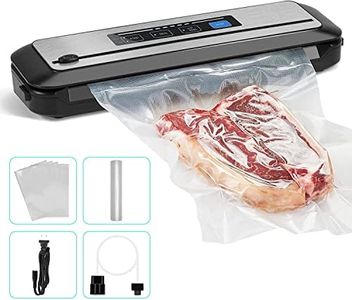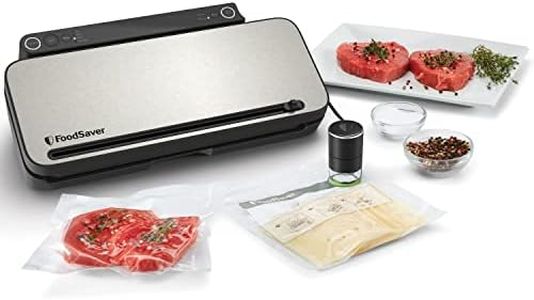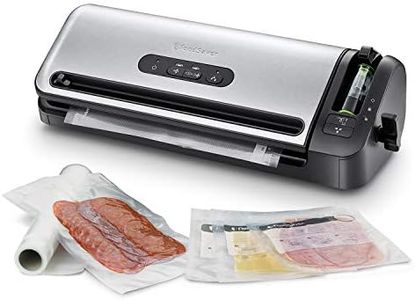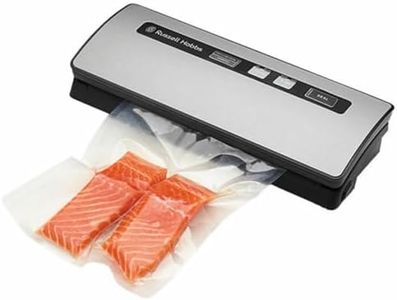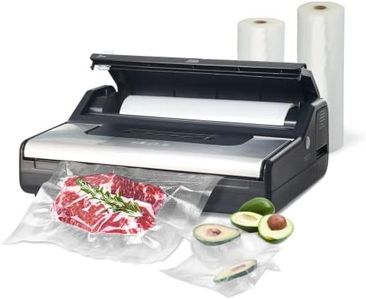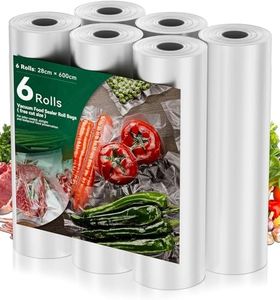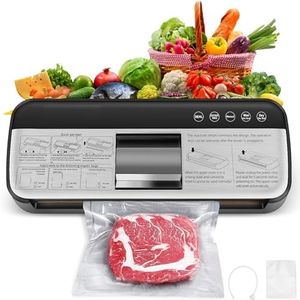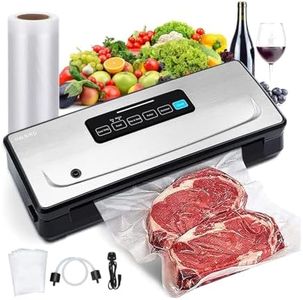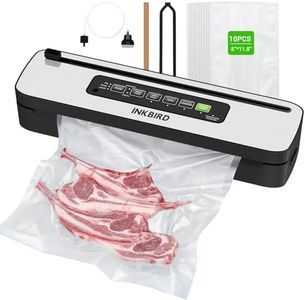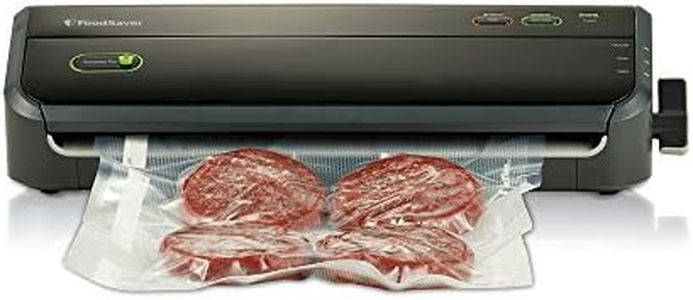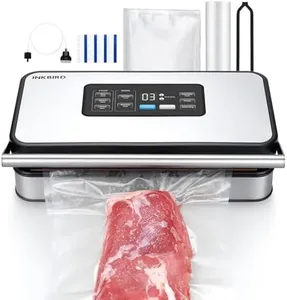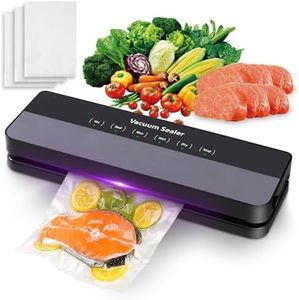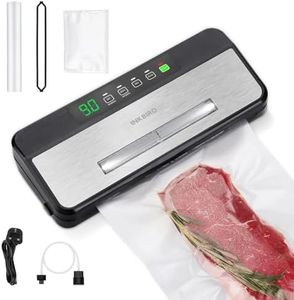We Use CookiesWe use cookies to enhance the security, performance,
functionality and for analytical and promotional activities. By continuing to browse this site you
are agreeing to our privacy policy
10 Best Food Sealers
From leading brands and best sellers available on the web.By clicking on a link to a third party's website, log data is shared with that third party.
Buying Guide for the Best Food Sealers
Choosing the right food sealer can help you store food for longer, reduce waste, and keep things fresher. The right model for you depends on your habits in the kitchen: whether you meal prep, buy in bulk, or just want to keep leftovers fresh. Understanding the various features and specs will help you pick a sealer that fits your needs and makes food storage convenient and reliable.Sealing MethodSealing method refers to how the food sealer closes and secures the bags. The most common types are suction/vacuum sealing and handheld sealing. Suction models remove air from the bag and then seal it, making them great for long-term storage and bulk items. Handheld sealers, which usually work on special zip-lock style bags, are more portable and better for quick or everyday use. If you plan to freeze food or store it long term, opt for a vacuum style; if you want something quick for snacks and fridge items, handheld might be a better fit.
Seal WidthSeal width is the maximum width of a bag the sealer can handle. Common widths are 8, 11, or even 12 inches. A wider sealing width lets you seal larger bags, which is handy if you store large cuts of meat or family-sized portions. If you mostly store small servings or snacks, a narrower seal might be sufficient and make the unit more compact.
Modes and SettingsSome food sealers have multiple modes, like 'dry' for solid foods and 'moist' for things like marinated meats or leftovers. Others allow for manual pulse sealing, so you control how much air is removed, which is useful for softer foods. More modes mean greater flexibility, but also slightly more learning—so think about what types of items you’ll seal most often and choose a model that best matches your needs.
Bag CompatibilityThis refers to the types of bags or rolls the sealer can use. Some sealers only work with proprietary bags while others are compatible with generic or third-party bags. Being able to use a range of bag types and sizes makes the device more versatile and cost-effective. If you want to avoid being tied to one brand for refills, look for a unit that accepts different bag types.
Ease of CleaningSome sealers are easier to clean than others, especially those that have a drip tray or removable parts. If you plan on sealing moist foods often, choose a model with features that make cleanup straightforward. Sealing can get messy, so ensuring easy maintenance will save hassle and keep your sealer in good condition longer.
Size and StorageFood sealers range from compact to large countertop units. A smaller model can fit easily in a drawer or small kitchen, while larger ones might take up more space but offer more features. Consider where you’ll store the device and how often you’ll use it—heavy users with bigger storage needs may benefit from a larger sealer that stays out, while occasional users may prioritize something more compact.
